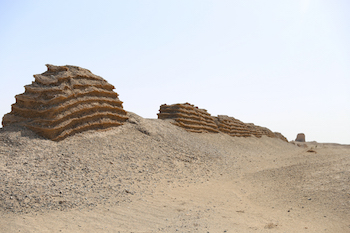The Han government was structured in a very particular way so as to centralise imperial power. The Emperor was at the very top of this hierarchy, ranking as the supreme lawgiver, commander of the military, and sole designator of top official posts. Bear in mind he was considered the Son of Heaven, so ignoring his wishes meant potentially angering the gods! Beneath him was a system of officials who were designed to advise him and keep tabs on the far reaching corners of his empire. Directly below the Emperor were the Three Councillors of State: the Chancellor/Minister over the Masses, whose chief responsibility was to draft the government budget, manage the land and population censuses, lead court conferences, and nominate scholars for official positions; the Imperial Counsellor/Excellency of Works, whose duty it was to conduct disciplinary procedures with other officials and oversee public works projects; and the Grand Commandment/Grand Marshal, who commanded the military.

Ranked just below this Trio of Terror were the Nine Ministers, who each controlled a specialised ministry. For example, the Minister of Ceremonies was charged with the organisation of religious rituals and the maintenance of temples, while the Minister of the Household was responsible for palace security and the Minister of Finance acted as the palace’s treasurer. Men who wished to become officials had to pass a series of examinations which, at the time, were not standardised. If they passed, they would have to endure a clerical internship spent serving other officials before potentially rising up through the 12 ranks of the Han court. This meant that most government officials were employed based on their personal merit and not on their family background. All in all, it was a well-thought out system that allowed the Emperor to keep informed on all aspects of his empire while simultaneously hindering any individual other than the Emperor from amassing too much power.
In a similar way, the empire itself was divided into political units according to size, beginning from largest to smallest with provinces, commanderies, counties, and finally districts. This was a system copied from the Qin Dynasty (221-206 BC) and it made ruling such a vast territory far easier, as each region could be run by a group of officials. They would collect taxes, settle disputes, supervise the people, and recruit new clerks, all on behalf of the Emperor! The only exception to this rule was the Ten Kingdoms, which were large semi-autonomous fiefdoms that were ruled by the Emperor’s male relatives. Their government was structured much like that of the Emperor, although the ruling princes were stripped of these privileges in 145 BC.
Aside from this governmental and territorial structure, the Han Dynasty lasted for so long that its political system had to adapt and evolve with the tides of time. For example, during his reign Emperor Wu took private industries such as salt, iron, and liquor production and nationalised them to fund his many military campaigns. This didn’t last long, however, as the government’s monopoly on salt and iron was relinquished during the Western Han Dynasty (206 BC-25 AD) and the one on liquor lasted for only 3 years before his people made their dissatisfaction known. Evidently you can take away a man’s seasonings and metals, but you better not take his booze! Although many political reforms such as these appeared to be short-lived, the hierarchical structure of the government was so effective that it enabled the Han emperors to rule the country efficiently for over 400 years.